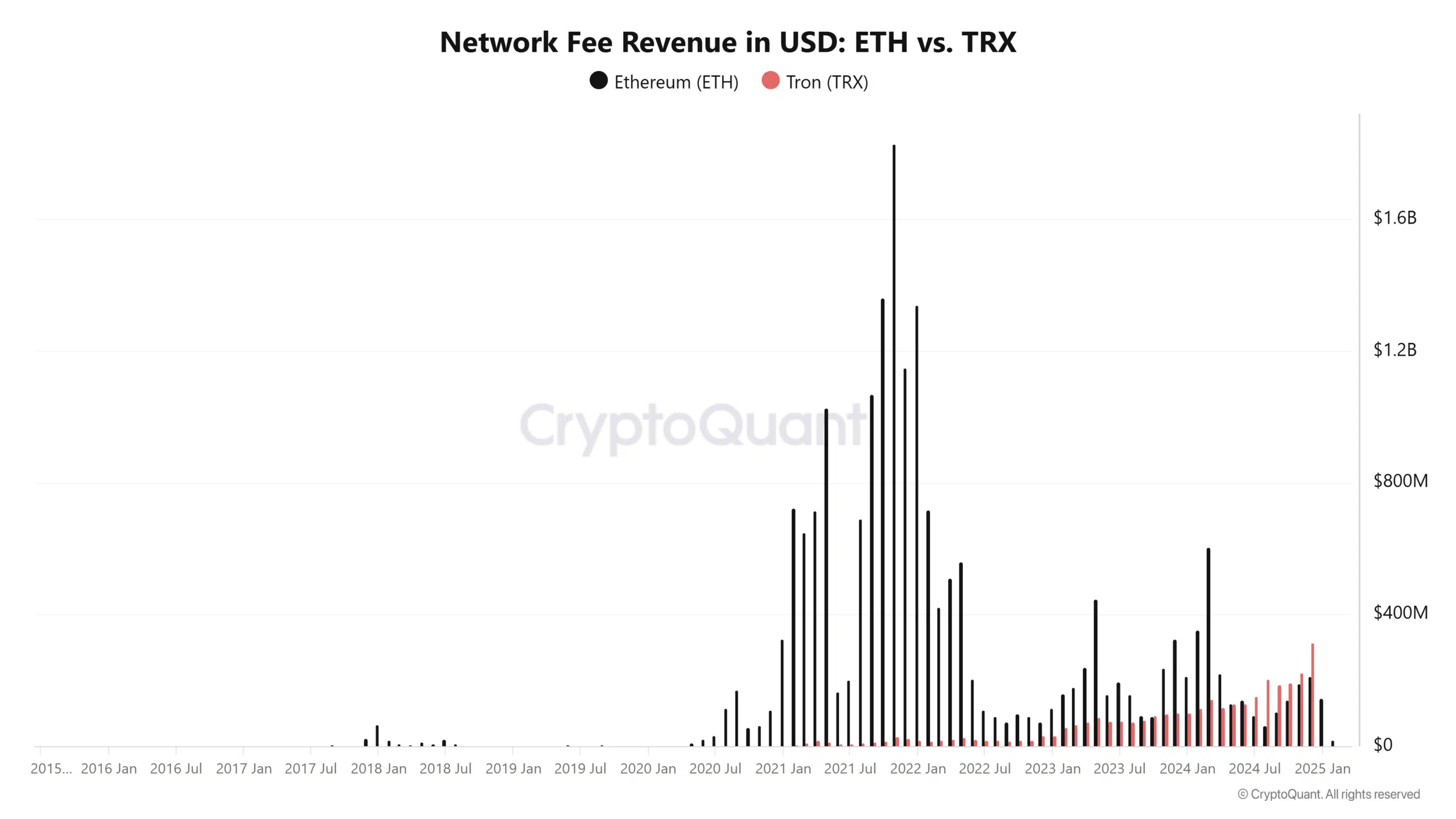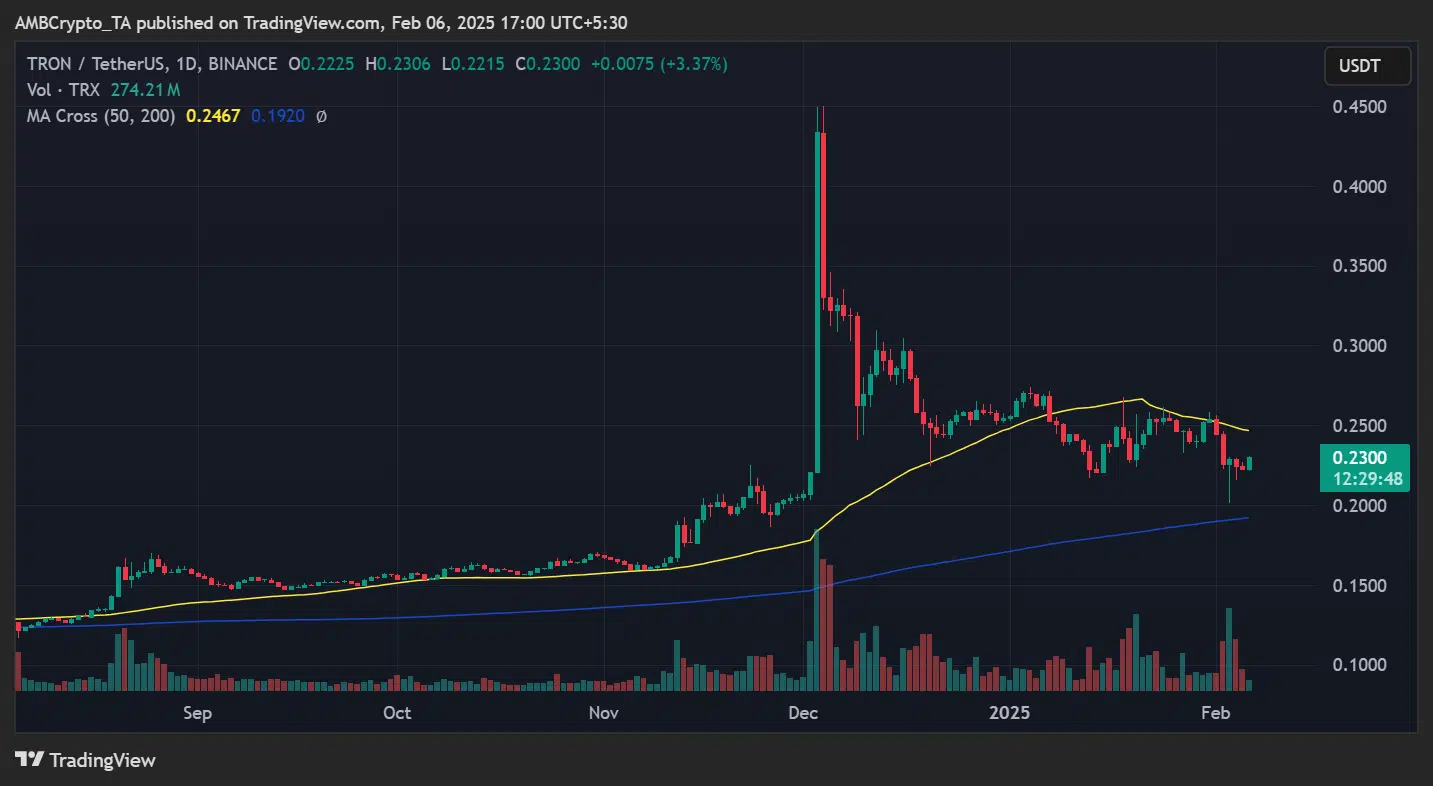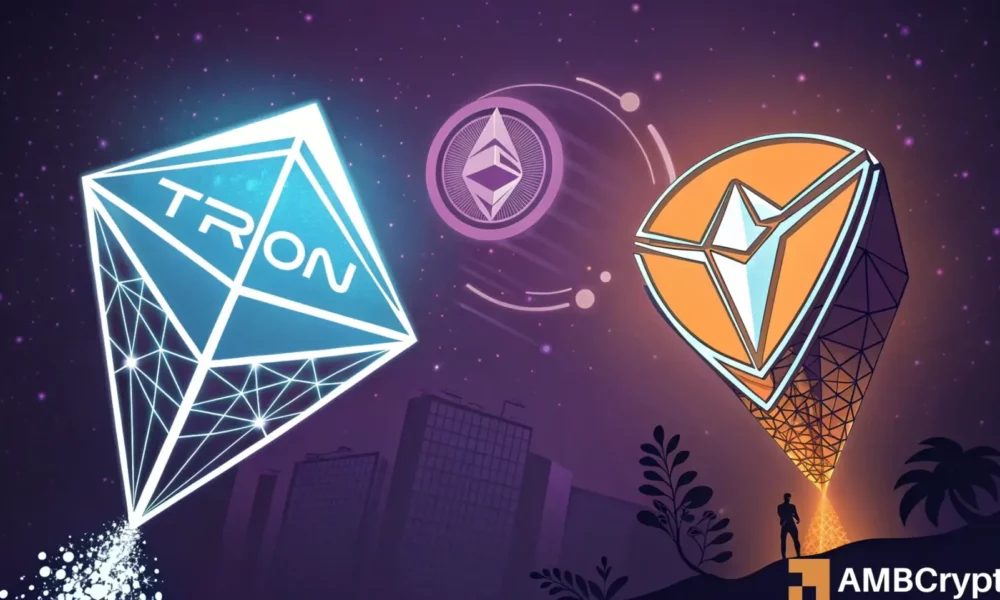- Tron surpassed Ethereum’s network fee revenue, driven by low-cost transactions and increasing stablecoin activity.
- TRX faced resistance at $0.2467 but could rally toward $0.30 if adoption and transaction volume continue growing.
TRON[TRX] has overtaken Ethereum’s[ETH] network fee revenue, signaling a significant shift in blockchain activity.
This development highlights TRON’s increasing adoption for transactions, particularly in stablecoin transfers and DeFi applications.
But how does TRON’s TVL compare with Ethereum’s, and what does it mean for TRX’s price trend?
TRON’s network fee revenue outpaces Ethereum
Recent data from CryptoQuant revealed that TRON has surpassed Ethereum in network fee revenue, a trend that reflects its growing dominance in blockchain transactions.
Historically, Ethereum has had more network fees, but high gas costs have driven users to low-fee alternatives like TRON.

Source: CryptoQuant
Analysis shows that Ethereum’s network fee revenue peaked at over $1.6 billion during the 2021 bull run, while TRON’s fee revenue remained relatively low.
However, recent months have seen TRON’s fees steadily increase, overtaking Ethereum in early 2025. This surge suggests that more users and applications are leveraging TRON’s network for cost-efficient transactions.
Comparing TRON and Ethereum TVL
Despite TRON’s rising network revenue, Ethereum still leads in Total Value Locked (TVL). Data from DeFiLlama shows that Ethereum’s TVL is currently around $60 billion, significantly higher than TRON’s $6 billion.
While TRON’s TVL has grown steadily, Ethereum’s ecosystem remains the go-to choice for high-value DeFi applications, institutional investments, and complex smart contracts.
One of the reasons for this discrepancy is that TRON’s network activity is largely driven by stablecoin transactions, particularly USDT transfers, rather than high-value DeFi protocols.
This difference highlights Ethereum’s strength as a DeFi powerhouse, while TRON benefits from widespread transaction efficiency.
Can it sustain momentum?
At press time, TRX was trading at $0.2300, reflecting a 3.37% daily gain. The 50-day Moving Average (MA) at $0.2467 presents a critical resistance level.
If TRX breaks above this threshold, it could rally toward $0.28-$0.30, marking a potential breakout zone.


Source: TradingView
The 200-day MA at $0.1920 remains a strong support level, meaning any downside correction could find buying interest around this area. If TRX holds above $0.22, bullish momentum could build, reinforcing its position for further gains.
What’s next for TRON?
TRON’s ability to surpass Ethereum’s network fee revenue signals strong adoption and user growth. However, for TRON to challenge Ethereum’s dominance in the DeFi space, it will need to increase TVL and attract institutional players.
From a price perspective, TRX must maintain support above $0.22 and break resistance at $0.25 to confirm a sustainable uptrend. TRX could target $0.30 and beyond if adoption continues growing, supported by strong transaction volumes and on-chain activity.
– Is your portfolio green? Check out the TRON Profit Calculator
Overall, TRON’s rising fee revenue highlights its increasing role in crypto transactions, but Ethereum’s strong DeFi ecosystem keeps it ahead in TVL.
The next few months will determine whether TRON can sustain this growth and further strengthen its market position.
